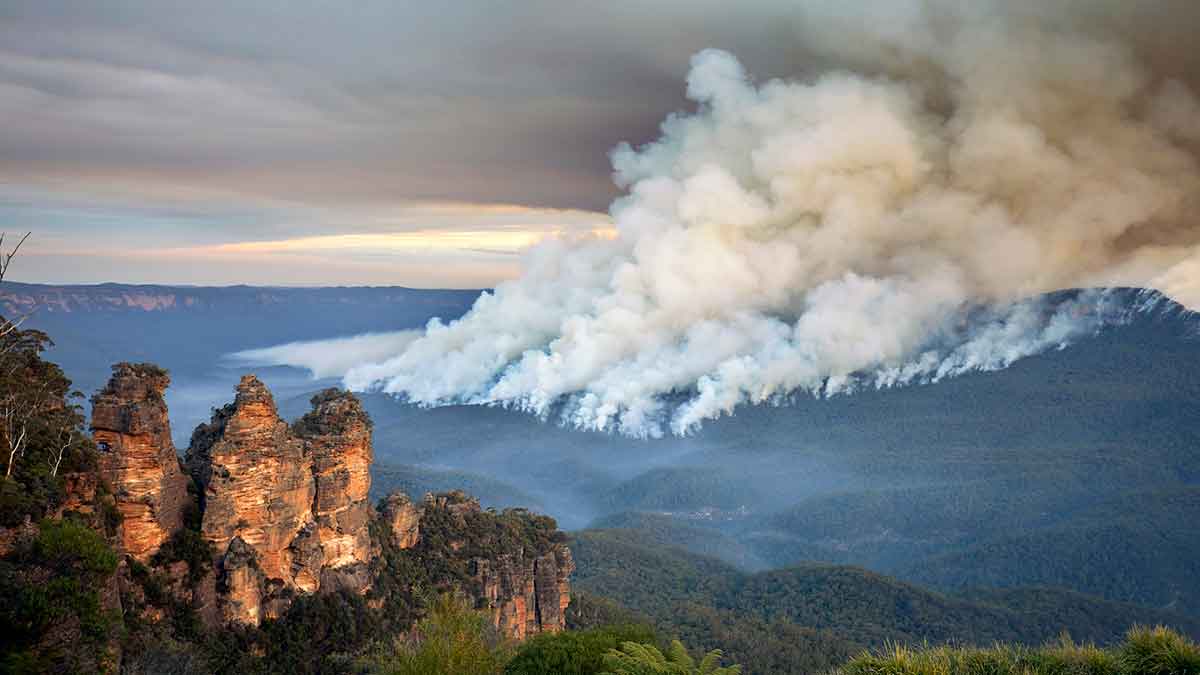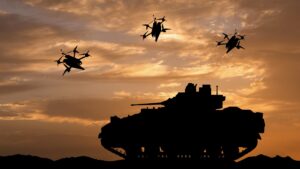Ninox Robotics, NSW RFS launch eye in the sky tech to redefine bushfire surveillance

The NSW Rural Fire Service is turning to Ninox Robotics’ drone technology to monitor live bushfires from the air. Pic via Getty Images.
- Australian drone company Ninox Robotics and the NSW Rural Fire Service (RFS) join forces to monitor live bushfires from the air
- Ninox Robotics drones to take flight at night for long-range patrols to detect and report on fire activity
- Cutting-edge drone technology is viewed as the future of bushfire surveillance
In a groundbreaking initiative to revolutionise bushfire surveillance and bolster firefighting efforts, the New South Wales Rural Fire Service (RFS) has teamed up with leading Australian drone operator Ninox Robotics to deploy cutting-edge long-range drone technology across western New South Wales.
The CASA (Civil Aviation Safety Authority) approved two-week mission was flown in Western New South Wales between Cobar and Bourke using an advanced Perimeter 8+ long-range multi-rotor drone equipped with state-of-the-art real-time dual electro-optical and infrared (thermal) cameras.
The approval was for beyond visual line of sight operations for an area 1/8th of NSW. Ninox Robotics used the drone to monitor live fires in grasslands, bush, and forests during the day and at night.
The Perimeter 8+ drone boasts an impressive flight endurance of up to four hours and a range spanning 50 kilometres from the ground control system.
Crucially, it can swiftly return to action after refuelling, with turnaround times clocking in at under 15 minutes. This agility ensures rapid response capabilities, a critical factor in containing bushfires before they escalate.
One of the most significant advantages of this drone technology is its ability to conduct after-dark surveillance missions, a feat largely prohibited for tactical crewed aircraft.
By leveraging this capability, the NSW RFS aims to bridge crucial information gaps that traditionally occur during nighttime hours, enhancing early detection and response to wildfires.

Ninox Robotics Founder and Managing Director Marcus Ehrlich with a Perimeter 8+ long-range multirotor platform, which was used in the NSW RFS trial. Pic: Supplied (Ninox Robotics)
Early detection is the key
Ninox Robotics Founder and Managing Director Marcus Ehrlich underscored the paramount importance of early detection in mitigating bushfire risks.
“This technology would provide fire agencies, like the RFS, with another important tool in the kit they can use,” he said.
“Anything that can support the protection of communities is good and should be explored and utilised.”
The RFS echoed their commitment to adopting technology that can save lives, emphasising the importance of innovation in their efforts.
Deputy Commissioner of the RFS Peter McKechnie said the Service was committed to developing and using technology that had the potential to protect people and property.
“The RFS recognises the critical importance of innovation in this field, with the aim of significantly impacting emergency response capabilities,” Deputy Commissioner McKechnie said.
“We look forward to the results of this trial and to learning how this technology can be used to protect communities and optimise the overall performance of our agency.”
Going green to battle blazes
Beyond its immediate firefighting applications, the adoption of drone technology promises far-reaching environmental benefits.
Ehrlich highlighted the role of early fire detection in curbing carbon emissions, citing the catastrophic Black Summer bushfires of 2019/2020, which unleashed a staggering 715 million tonnes of carbon dioxide into the atmosphere.
By swiftly identifying and suppressing wildfires, drones can play a pivotal role in mitigating the environmental impact of such disasters.
The trial represents a significant milestone in the evolution of bushfire management strategies.
As the global incidence of extreme bushfires continues to rise, initiatives like this underscore the critical role of innovation in enhancing resilience and safeguarding communities against the ravages of climate change.
Ninox Robotics’ expertise extends beyond bushfire management, encompassing a wide range of industries, from infrastructure and agriculture to defence and emergency services.
This article was developed in collaboration with Ninox Robotics, a Stockhead advertiser at the time of publishing.
This article does not constitute financial product advice. You should consider obtaining independent advice before making any financial decisions.
Related Topics
UNLOCK INSIGHTS
Discover the untold stories of emerging ASX stocks.
Daily news and expert analysis, it's free to subscribe.
By proceeding, you confirm you understand that we handle personal information in accordance with our Privacy Policy.








